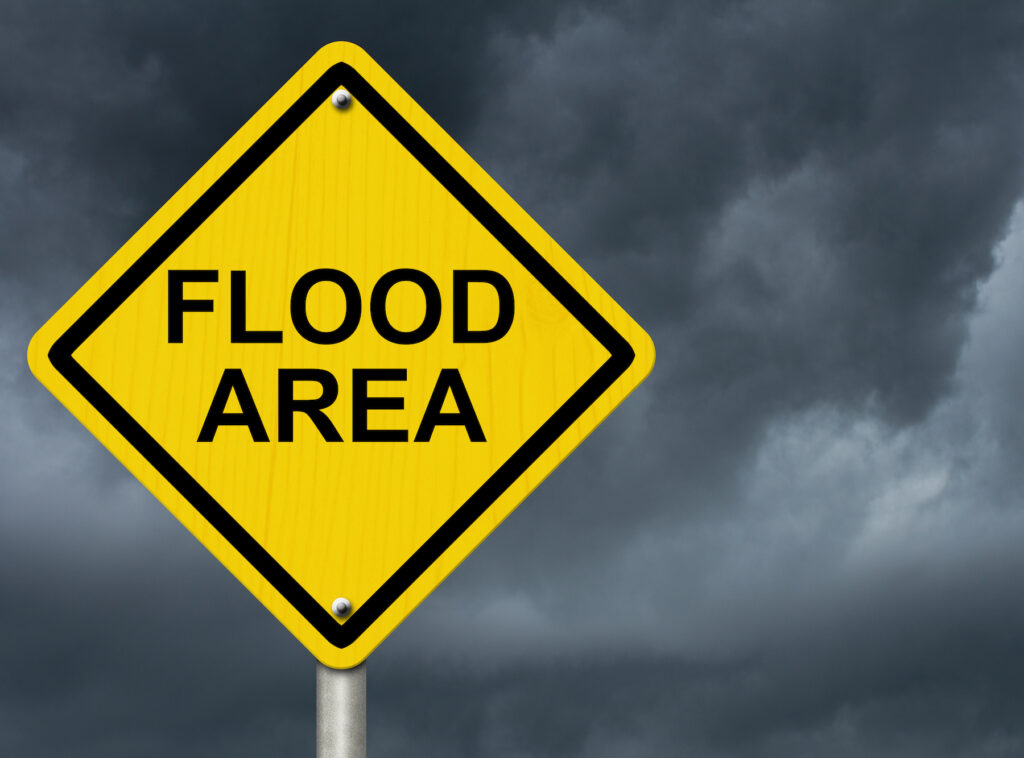Weather warnings in place as Storm Babet threatens rural areas
20th October 2023
Storm Babet is battering large parts of the UK, with a rare red weather alert issued by the Met Office for “exceptional” rainfall in parts of Scotland, stating a risk to life.

A red warning for rain is in place across eastern Scotland until midday Friday (20th October), and amber warnings across parts of southeast Scotland, north east Wales and northern England until 6am on Saturday.
The River South Esk in Brechin burst its banks at 4am this morning and hundreds of people have been told to evacuate their homes in Angus.
Chief veterinary officer for Scotland, Sheila Voas said on X: ‘A heartfelt reminder to farmers, as #StormBabet approaches, that stock on ground liable to flood should be moved to higher ground in advance of the storm to protect them from drowning or being swept away, and protect the lives of people who may try to rescue them.’
Earlier this week, NFU Scotland – Angus reported intense activity in the Angus countryside ahead of the storm. The group said on X: ‘Lifting tatties as quick as possible, straw being baled, livestock being moved to higher ground. Clearing drains around steadings. Maybe even a few bales in gateways of bare fields to keep sediment from road drains’.
The storm follows recent flooding in Scotland over the past two weeks, resulting in significant damage to farmland, crops and infrastructure. RSABI launched a fund to help those worst affected.
NFU Mutual urged farmers to take steps to protect themselves and their businesses, as there is a risk of localised flooding across the UK, storm force winds and damage to property.
The rural insurer offers a guide for property owners on how they can secure their property before a storm or flood.
NFU Mutual’s storm resilience guide
- Make sure all doors and windows can be securely closed.
- Prepare for power cuts: Have torches and batteries to hand and make sure any generators are ready to use if required. If you are using candles, make sure you use them safely and extinguish when leaving the room, and make sure nothing hangs over the candles.
- Inspect your property and make repairs to things like loose fence panels or gates.
- Make sure gutters are not leaking and are clear of leaves and other debris.
- Have a space to put loose outdoor furniture like garden chairs and trampolines. If you do not have an indoor space in which to put them, ensure you have a means of tying down or otherwise securing the furniture.
- Safely check that tiles, slates and roofing sheets are in place, securing any that are not.
- Inspect trees on your property, removing loose or overhanging branches which may cause damage to your or others’ property in a storm.
- Repair or unblock any faulty drains.
- If you have a garage, clear a space for your vehicle in the event of a storm. If you do not have a garage, plan where you can park vehicle during a storm – this should be away from any walls, fences or branches which could fall and damage the vehicle.
- Protect and lag water pipes in vulnerable areas and know where the water supply is so that you can turn it off in the event of burst pipes.
- Stay alert for Met Office weather warnings in your area.
- Have your insurer’s emergency helpline number available.
Additional advice for business owners:
- Ensure you have emergency contact details for employees to maintain contact during an extreme weather event.
- If you have company vehicles, make sure these are parked away from walls, fences or branches which could damage the vehicles.
- Make sure outdoor signage or displays can be secured or brought inside.
- Ensure you have adequate signage warning customers of things like wet floors that may be more common during extreme weather.
- Prepare an emergency evacuation route in the event of unexpectedly severe weather.
- Ensure central heating will come on during freezing weather to avoid frozen pipes, and consider procuring sandbags to protect your business in the event of a flood.
- Make sure you have a way of communicating closures with customers.
- Consider transport routes to the business and whether traveling will be safe and practical.
While driving:
- Drive slowly and steadily and leave larger gaps between vehicles. Wet conditions can increase stopping distances by ten times.
- In windy weather, leave plenty of room when passing other road users, particularly vulnerable road users like walkers, cyclists and motorcyclists.
- Avoid braking suddenly, slowing down gently before corners and junctions.
- Accelerate slowly, keeping revs low.
- Take care coming up to junctions where road markings may be less visible.
